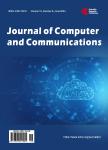Fingerprint Enhancement, Minutiae Extraction and Matching Techniques
Fingerprint Enhancement, Minutiae Extraction and Matching Techniques作者机构:School of Computer Science and Technology Huazhong University of Science and Technology (HUST) Wuhan China
出 版 物:《Journal of Computer and Communications》 (电脑和通信(英文))
年 卷 期:2020年第8卷第5期
页 面:55-74页
学科分类:08[工学] 0812[工学-计算机科学与技术(可授工学、理学学位)]
主 题:Fingerprint Enhancement Minutiae Extraction Minutiae Matching Ridgeline Thinning Removable Spurious Minutiae
摘 要:Nowadays, it is a new technology era. Fingerprint is necessary identification recognition of citizens. Fingerprint technology has become more popular and connected to human being life and come to replace traditional identification and verifying recognition today. The fingerprint will continue to substitute the ID of citizens as soon as possible in the future. Fingerprint refers to a complex of combination between gap of ridges and valleys on all of the fingertips. Clearer ridges quality is more convenient to analyze who you are and system can recognize your unique identity. Poorer ridges quality image is a significant problem that system has to improve and enhance the images quality before analyzing the results. Dry and wet ridges are the main issues that developers and researchers need to work on as it provides poor quality image. Medium ridge image is a good condition for analysis, but it also needs to be improved. Therefore, fingerprint images have to control the clearer quality and computing minutiae result and then comparing to templates, which stored in the database. The result will display if it is matched but it will not appear when that person has not yet registered. The paper proposed three algorithms to enhance image, extract minutiae and match with fingerprint templates. The first step, is used to enhance the image quality using brightness and Gabor filters on the fingerprint surface to make ridgelines darker. The second step is to extract minutia. It used to convert the images to binary (0 and 1) and process thinning image with Zhang Suen algorithms. Then, the pictures go through the fixing procedure to correct any missed links, error ridges or spurious minutiae that generated by fingerprint algorithms before they undergo final analysis, calculate location of minutiae and the total of the minutiae on the fingerprint surface. The last step is matching algorithms that can be proof of a person identity by comparing minutiae result with those in the databas



